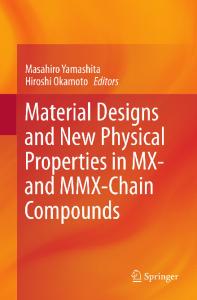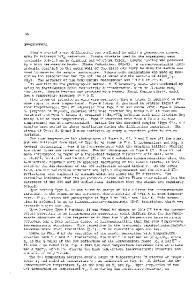Photoinduced Phase Transitions in MX-Chain Compounds
One-dimensional (1D) electron system is good arena for the exploration of photoinduced phase transitions (PIPTs). This is because photocarrier generations and/or charge-transfer (CT) excitations by lights can stimulate instabilities inherent to 1D nature
- PDF / 10,741,656 Bytes
- 275 Pages / 439.37 x 666.142 pts Page_size
- 22 Downloads / 439 Views
.
Masahiro Yamashita • Hiroshi Okamoto Editors
Material Designs and New Physical Properties in MX- and MMX-Chain Compounds
Editors Masahiro Yamashita Departement of Chemistry Tohoku University Sendai Japan
Hiroshi Okamoto Kashiwa Japan
ISBN 978-3-7091-1316-5 ISBN 978-3-7091-1317-2 (eBook) DOI 10.1007/978-3-7091-1317-2 Springer Wien Heidelberg New York Dordrecht London Library of Congress Control Number: 2012953272 # Springer-Verlag Wien 2013 This work is subject to copyright. All rights are reserved by the Publisher, whether the whole or part of the material is concerned, specifically the rights of translation, reprinting, reuse of illustrations, recitation, broadcasting, reproduction on microfilms or in any other physical way, and transmission or information storage and retrieval, electronic adaptation, computer software, or by similar or dissimilar methodology now known or hereafter developed. Exempted from this legal reservation are brief excerpts in connection with reviews or scholarly analysis or material supplied specifically for the purpose of being entered and executed on a computer system, for exclusive use by the purchaser of the work. Duplication of this publication or parts thereof is permitted only under the provisions of the Copyright Law of the Publisher’s location, in its current version, and permission for use must always be obtained from Springer. Permissions for use may be obtained through RightsLink at the Copyright Clearance Center. Violations are liable to prosecution under the respective Copyright Law. The use of general descriptive names, registered names, trademarks, service marks, etc. in this publication does not imply, even in the absence of a specific statement, that such names are exempt from the relevant protective laws and regulations and therefore free for general use. While the advice and information in this book are believed to be true and accurate at the date of publication, neither the authors nor the editors nor the publisher can accept any legal responsibility for any errors or omissions that may be made. The publisher makes no warranty, express or implied, with respect to the material contained herein. Printed on acid-free paper Springer is part of Springer Science+Business Media (www.springer.com)
Preface
Material Designs and New Physical Properties in MX- and MMX-Chain Compounds The history of quasi-one-dimensional halogen-bridged Pt complexes began at the end of the nineteenth century when Wolffram reported a Cl-bridged complex, Pt(etn)4Cl3·2H2O (etn¼ethylamine), which is called Wolffram’s red salt because of its lustrous red color. This complex was considered to be a PtIII complex, but it has been shown that it is actually a PtII–PtIV mixed valence complex [Pt(etn)2] [PtCl2(etn)4]Cl4·4H2O. Since then, many Pt complexes as well as Pd complexes have been synthesized. In 1981, Ni(chxn)2Br3 (chxn¼1R,2R-diaminocyclohexane) was synthesized. X-ray structure analysis revealed that it was not a NiII–NiIV complex, but a NiIII complex. Theoretically, these compounds are t
Data Loading...









